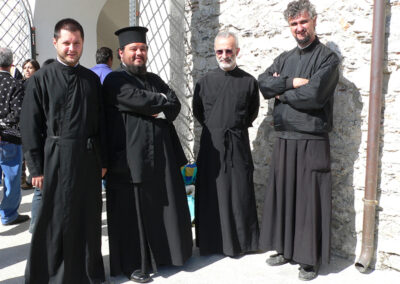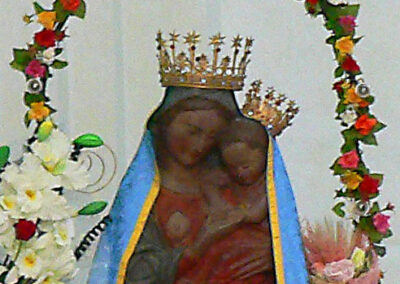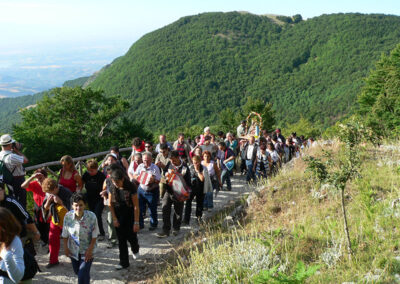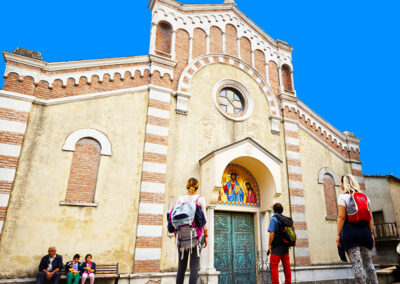Acquaformosa
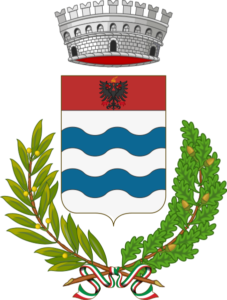
Antico centro, oggi abitato dagli arberesh, era di dominio di Ogerio e Basilia, signori feudali di Brahalla (Altomonte), i quali nel 1191 lo donarono all’Ordine Monastico dei Cistercensi per fondarvi una abbazia dedicata alla Madonna. Col tempo questo monastero divenne molto importante, tanto da rivaleggiare con le altre abbazie calabresi. Tra i suoi possedimenti figuravano la miniera di ferro di San Donato Ninea, l’isola di Dino, le saline di Lungro, donate da Federico II tra il 1202 e il 1206, alle quali si aggiunsero nel 1224 la chiesa e il tenimento di San Pietro Lo Grasso, tra Papasidero e Scalea, la chiesa di San Leonardo e il tenimento di Sassone nel territorio di San Basile. La floridezza dell’abbazia di Santa Maria del Leucio finì nel 149 0 quando fu concessa in commenda al canonico napoletano Carlo de Cioiffis, il quale nel 1501 accolse un gruppo di profughi albanesi guidati da Pellegrino Capo, Giorgio Cortese e Martino Capparelli, i quali chiesero il permesso di fondare un villaggio nel tenimento dell’abbazia, denominato Arioso. Nacque così Acquaformosa mentre la secolare abbazia abbandonata al degrado svanì lasciando solo qualche spezzone di mura e alcune importanti opere d’arte, conservate oggi nelle chiese cittadine.
La prima chiesa costruita dai profughi albanesi fu, probabilmente, la cappella della Concezione, la quale mostra al suo interno una serie di dipinti murali di varie epoche. I più antichi risalgono alla prima metà del XVI secolo e raffigurano il Padre Eterno, la Vergine, San Giovanni Battista, la Parasceve e i Santi Pietro e Nicola di Bari. La seconda serie mostra dei frammenti delle figure di Santa Caterina d’Alessandria e di San Giorgio dipinti nella seconda metà del XVII secolo, La terza serie, infine, racchiusa in ovali di stucco raffigura la Parasceve e San Giovanni Evangelista e fa da contorno ad una tela con l’Immacolata dipinta da un anonimo pittore del 1785, epoca in cui è stato composto il bel soffitto ligneo decorato da angeli e racemi floreali di un garbato Roccocò
Vanto della cappella sono i 17 busti reliquiari, provenienti dall’abbazia, risalenti alla fine del XVII secolo.
La chiesa matrice è, però, quella dedicata a San Giovanni Battista a tre navate, liberate dagli stucchi settecenteschi le cui pareti sino ricoperte da estesi mosaici di ispirazione bizantina caratterizzati dal fondo oro sul quale si stagliano con brillanti colori scene dell’Antico Testamento
L’Altare Maggiore è racchiuso dalla consueta Iconostasi dipinta da Giovan Battista Conti nel 1940, elemento tipico del rito greco osservato dalle popolazioni albanesi che fanno capo all’Eparchia di Lungro.
Degni di nota sono i frammenti del coro ligneo con leggio del primo ‘600, i battenti della primitiva porta, coeva al coro, decorati con aquile bicipiti, simboli degli antichi stati che facevano capo all’Impero Bizantino. Questi lavori trovano assonanza con quelli della chiesa della Consolazione di Altomonte, della quale per un lungo periodo la chiesa di San Giovanni è stata suffraganea.
Nel museo si possono ammirare tre notevoli dipinti provenienti dall’antica abbazia, attribuiti a Marco Pino da Siena, artista toscano del tardo Cinquecento, molto attivo a Napoli. La tavola più importante raffigura l’Assunzione della Vergine Maria, portata in cielo dagli angeli, mentre gli Apostoli osservano stupiti il sepolcro vuoto ma animato da delicati fiori. Le altre due tavole raffigurano dei Santi Abati. Preziosa è ancora una statua lignea della Madonna col Bambino in trono del XV secolo.
Non lontano dal centro abitato, tra lussureggianti faggete, sorge il Santuario di Santa Maria del Monte documentato sin dal 1190, la cui fondazione si deve, però, far risalire al X secolo e al Movimento Basiliano. Il Santuario mostra un’architettura semplice con riferimenti gotici frammisti a elementi barocchi. Al suo interno si conserva una delicata scultura in tufo raffigurante la Madonna col Bambino assegnabile alla fine del XV o primi del XVI secolo.
An ancient place, now inhabited by the Arbëreshë (Italian-Albanians), was once ruled by Ogerio and Basilia, feudal lords of Brahalla (Altomonte), who in 1191 donated it to the Monastic Order of the Cistercians to establish an Abbey dedicated to the Madonna.Over time, this monastery became really important, rivaling other Calabrian abbeys.
Its possessions included the iron mines of San Donato Ninea, the Island of Dino, the salt flats of Lungro, donated by Frederick II between 1202 and 1206, to which were added in 1224 the church and estate of San Pietro LoGrasso between Papasidero and Scalea, the church of San Leonardo and the estate of Sassone in the territory of San Basile.
The prosperity of Santa Maria del Lucio Abbey came to an end in 1490 when it was granted to the Neapolitan canon Carlo de Cioiffis, who in 1501 welcomed a group of refugees from Albania led by Pellegrino Capo, Giorgio Cortese and Martino Capparelli, who requested permission to found a village in the abbey’s estate, named Arioso.Thus Acquaformosa was born, while the ancient abbey abandoned to decay, disappeared, leaving only few fragments of walls and important artworks, now preserved in the town’s churches.
The first church built by Albanian refugees was probably the chapel of the Conception, which displays a series of mural paintings of different eras inside. The oldest paintings date back to the first half of 16th century and depict the Eternal Father, the Virgin Mary, Saint John the Baptist, Parasceve and Saints Peter and Nicholas of Bari.
The second series shows some fragments of the figures of Saint Catherine of Alessandria and Saint Giorge, painted in the second half of the 17th century.
The third series enclosed in stucco oval depicts Parasceve and Saint John the Evangelist, surrounding a canvas of the Immaculate Conception painted by an anonymous painter in 1785, the same period when the beautiful wooden ceiling decorated with angels and floral garlands of delicate Roccocò was created.
You can admire the 17 reliquary busts, originating from the abbey and dating back to the late 17th century.
The main church is dedicated to Saint John the Baptist with three aisles, cleared of the 18th century stuccoes, and with walls covered in extensive Byzantine-inspired mosaics characterized by a gold background and brightly coloured scenes from the Old Testament.
The Major Altar is enclosed by the usual Iconostasis painted by Giovanni Battista Conti in 1940, typical element of the Greek rite observed by the Albanian populations under the jurisdiction of the Eparchy of Lungro.
Of note are the fragments of the 17th century wooden choir with a lectern, the doors, decorated with double-headed eagles, symbols of the ancient states that were part of the Byzantine Empire. These works are reminiscent of those in the church of the Consolazione in Altomonte, of which the church of San Giovanni was a subordinate for a long period.
In the museum you can admire three notable paintings from the ancient abbey, attributed to Marco Pino from Siena, a Tuscan artist from the late 16th century, who was active in Naples. The most important panel depicts the Assumption of the Virgin Mary, taken to heaven by angels, while the Apostles observe the empty tomb, decorated by delicate flowers. The other two panels show the Saints Abbots. Also precious is a wooden statue of the Madonna with Child on a throne from the 15th century.
Not far from the inhabited center, amid lush beech forests, stands the Sanctuary of Santa Maria del Monte, documented as early as 1190, although its foundation must be traced back to the tenth century and the Basilian Movement.
The Sanctuary exhibits simple architecture with Gothic references mixed with Baroque elements. Inside there is a delicate tuff sculpture depicting the Madonna with the Child dating to the late 15th or early 16th century.
Adil Hajar
Di Maio Valentina
Spinelli Alberto
Quintieri Raffaele

